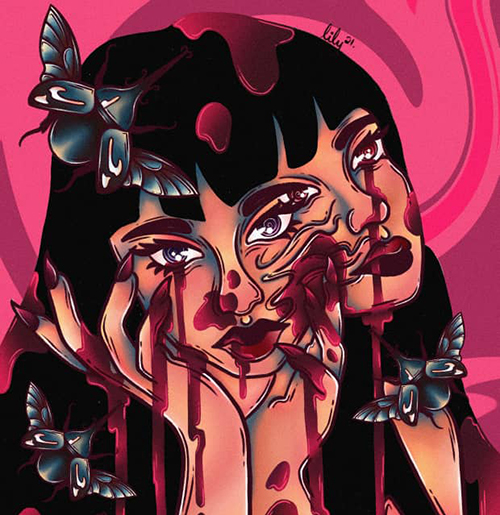Rose-Mary Haufiku
Artist Belia Liebenberg gravitates toward images of women in interesting poses or clothing, but also likes painting plants, flowers, animals and insects.
When she paints the human face, Liebenberg likes to make the eyes and lips bigger, just to make it look more animated than realistic.
“I like to up the contrast and vibrancy so that the artwork pops. I want it to stand out and not blend into the background. I also like to add a grain texture to my art so that it looks more like a traditional artwork, rather than digitalised,” she told VIBEZ!
Beginning
Liebenberg started doing art when she was five at the Helga Martens Art Studio and continued with it through primary school, then high school and now university, where she is pursuing a Bachelor of Arts (Honours), majoring in clinical psychology and ceramics.
“As a child, I went to art classes, where I learned about different art mediums and how I can use them in my own personal way to create art that speak uniquely to who I am,” said the 21-year-old.
The caricaturist is trying to make a full-time career out of art.
“I sell my art, do custom-commissioned pieces, go to markets, and I even started my own private hand poke tattoo business,” she gushed.
Digital and traditional
Liebenberg does both digital and traditional art. For digital art, she uses the sixth generation iPad and a first-generation Apple pencil. She uses a drawing app to procreate and also uses a type of grainy inking brush for line work and a 6B pencil brush for colouring and rendering.
When doing traditional type art mediums, she uses oil paint, alcohol markers or colour pencils. For her hand poke tattoos, she uses a traditional tattoo machine and lining needles. “When creating my digital art, I look up a lot of interesting-looking reference images that I melt together to create my desired composition. I then draw directly onto my drawing tablet, starting with a sketch, cleaning the sketch up and making the final line work. Then the fun starts, where I get to use colour and once I’ve finalised the drawing, I print my work onto thick watercolour paper,” she explained.
For her traditional artwork, she sketches digitally, prints it and traces it onto paper or canvas. Liebenberg noted that she likes to paint in layers, making it blend in circular motions. “I colour pieces in circular motions as it creates a smooth, blended look and once everything is done and dry, I varnish both my painted and drawn pieces,” she added.
For illustrations, she gets inspiration from a variety of things, ranging from Pinterest images, songs or other artists’ work.
No shortcuts
About her journey in art thus far, Liebenberg said there is no shortcut to finding an art style, adding that to get where one needs to be, one must put forth a lot of effort. She advised aspiring artists to learn from others, conduct research, and experiment with various approaches. These are all ways to develop one’s own particular art process, she noted, and urged them to document their work online and gradually build an audience.
“If you keep working at your craft and you’re truly passionate about what you do, you can make it to that future goal you want to reach with your art.”
Future
Liebenberg aspires to make a living off her artwork, and wants to open her own public art studio where she’ll be tutoring others about digital art. “I’d like to sell my work overseas and take on apprentices to teach them about hand poke tattoos as well.”


